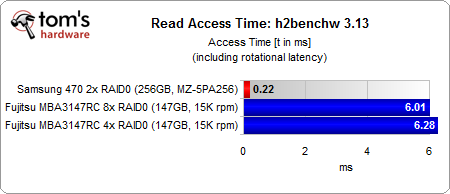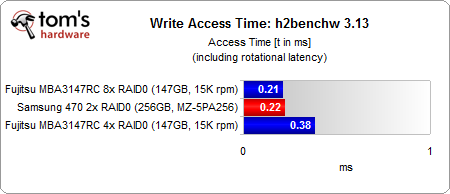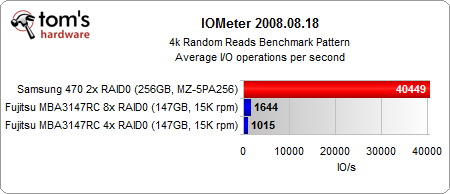How Do SSDs Redefine Storage Performance?
It only takes one or two modern SSDs to outperform business-class RAID arrays with four or eight hard drives. We're running a full comparison and looking at the implications for high-performance systems when you make the transition to flash-based tech.
Benchmark Results: Access Time And 4K Random Read/Write
Access Time
Access time is virtually nonexistent on most flash SSDs, and it shows in our access time test results. Keep in mind that these hard drives are still among the fastest you can get when it comes to I/O and access time, but 0.22 ms on the Samsung 470-series versus 6+ ms on the Fujitsu hard drives is a huge difference.
Write access time is more similar, mostly because of LSI’s RAID controller helping to tweak write access on the hard drives.
4K Random Read/Write I/O Performance
Reading or writing 4 KB blocks in a random fashion remains one of the most important tests because 4 KB blocks are common in x86 system memory page sizes and file system clusters.
SSDs, especially those with multi-level cell (MLC) NAND flash, are extremely fast when it comes to random read performance. We see this with the dual SSD RAID setup being almost 25 times faster than eight 15 000 RPM hard drives.
Random writes are more difficult for MLC SSDs. Writes entail a read-erase-modify-write cycle, even if only 4 KB in a larger block gets modified. This takes time, so the performance difference with conventional hard drives is smaller, but it’s still 2.2x.
Get Tom's Hardware's best news and in-depth reviews, straight to your inbox.
Current page: Benchmark Results: Access Time And 4K Random Read/Write
Prev Page Test Setup Next Page Benchmark Results: Read/Write Throughput And Streaming


